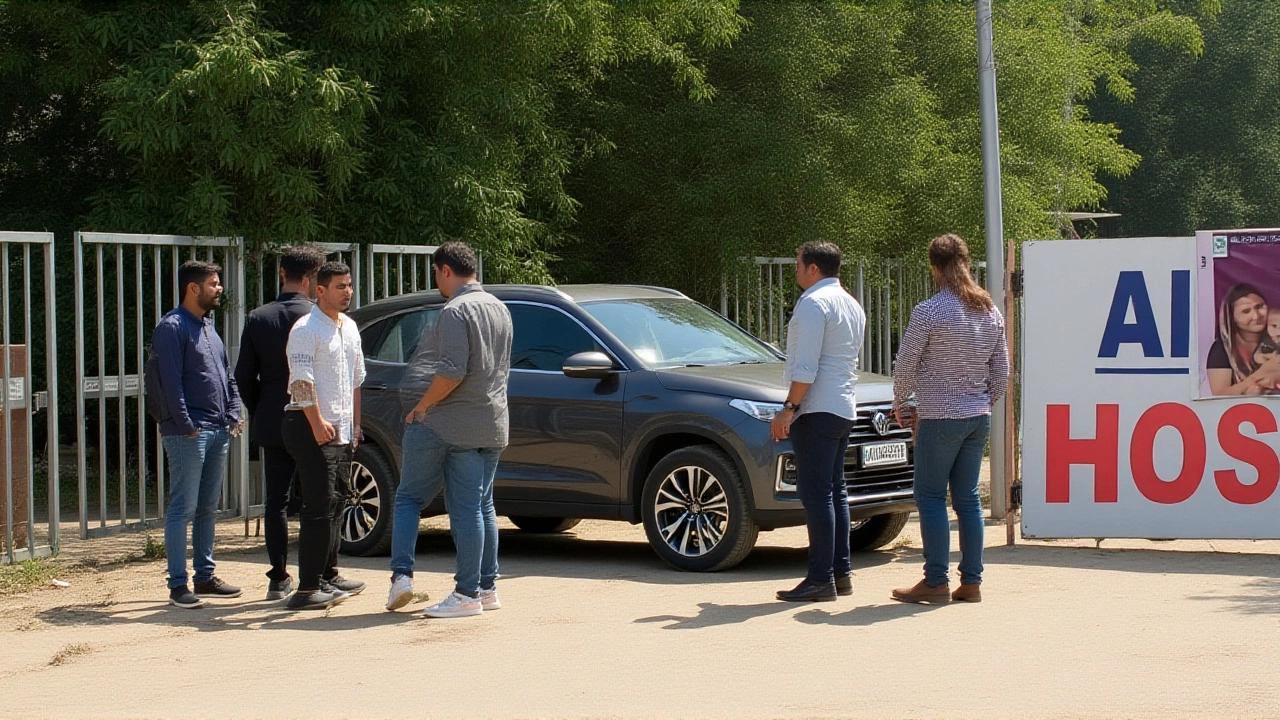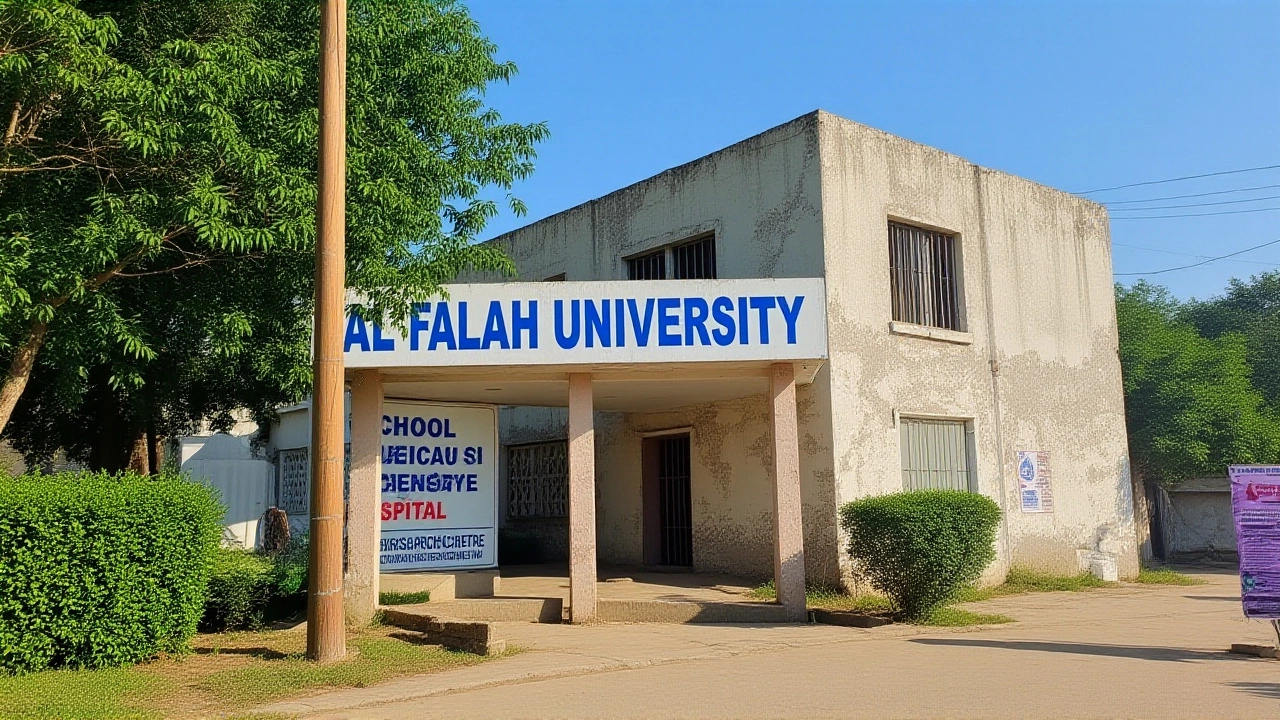When a bomb tore through the area near Red Fort in Delhi on November 10, 2025, authorities expected chaos — not a chilling revelation that the attack was orchestrated by a network of doctors. Within days, the National Investigation Agency (NIA) zeroed in on Al Falah University in Faridabad, where over 200 medical staff, faculty, and students vanished from public view — some fleeing, others detained. The suicide bomber, identified as Dr. Umar Un Nabi, wasn’t an isolated radical. He was part of a chillingly systematic pipeline: young Kashmiri medical graduates, brainwashed over years, turned into sleeper agents wearing white coats.
The Medical Terror Network
The NIA’s investigation uncovered something unprecedented: a terror module built not in caves or jungles, but in lecture halls and hospital corridors. Dr. Umar and his co-conspirator, Dr. Mujammil Shakil Gani from Pulwama, had a falling out over $400,000 in funding meant to buy explosives — money allegedly funneled from a Kashmir-based group. Their dispute turned deadly. But the real story lies deeper. Investigators found that Dr. Mujammil, along with Maulvi Mufti Irfan Ahmad Wagi from Anantnag, had spent the last four to five years indoctrinating over 300 Kashmiri youth — many of them medical students — with videos of alleged atrocities against Muslims worldwide. These weren’t just sermons. They were psychological conditioning sessions, repeated daily, until doubt turned to rage.
Compounding the horror, police recovered a leather-bound diary from Al Falah University’s premises listing 2,350 names — potential recruits, donors, or silent supporters. Many were students who had graduated from government medical colleges in Jammu before enrolling at Al Falah. Their medical degrees weren’t just credentials — they were passports to move undetected across borders and hospitals, blending into society while plotting attacks.
Al Falah University: Campus Under Siege
Once a respected private medical institution with 200 MBBS seats — a 33% increase approved by the National Medical Commission (NMC) just two years ago — Al Falah University now finds itself at the epicenter of a national crisis. NIA teams have raided hostels, seized hundreds of mobile phones, and mapped digital trails linking students to encrypted chats with known terror operatives. Three categories of suspects emerged: Category A — those directly involved in bomb-making or logistics (dozens arrested); Category B — those who knew the plotters but didn’t participate (some released after questioning, but under surveillance); and Category C — those flagged for ideological ties.
Even the university’s chairman, Javed Ahmad Siddiqui, is under investigation. He’s currently in judicial custody, and while no direct evidence ties him to the blast, investigators are probing whether he knowingly allowed radicalization to fester on campus. The university’s administration insists it’s been unaware of any extremist activity. "We’ve never received any complaint," said a senior administrator, speaking anonymously. "We’re cooperating fully. But this isn’t a terrorist school — it’s a school under terrorist siege."
Who Are the Victims Here?
Beyond the suspects, the real tragedy lies with the 1,000+ innocent students and faculty still on campus. Parents are calling in panic. Some have pulled their children out. Others are too scared to speak. "My son is a third-year student. He studies anatomy. He doesn’t even know how to tie a knot in a rope," said Rizwana Khan, a mother from Srinagar, her voice trembling. "Now the whole world thinks he’s a killer."
For students who passed the grueling NEET exam, invested years in their education, and dreamed of becoming doctors — this isn’t just a scandal. It’s an erasure of identity. The Association of Indian Universities has launched a parallel review. The NMC is examining whether Al Falah’s accreditation should be suspended. The university’s reputation, painstakingly built over two decades, now hangs by a thread.

Why This Matters Beyond One Campus
This isn’t the first time Al Falah’s name surfaced in terror investigations. In 2008, during the Ahmedabad serial bombings, one of the bombers — Mirza Shahab Beg — was a 2007 graduate of Al Falah Engineering College, where he studied Electronics and Instrumentation. The pattern is clear: a long-term strategy to infiltrate professions with public trust. Doctors, engineers, pharmacists — all positions that grant access, mobility, and invisibility.
Experts warn this "white-collar terrorism" model is spreading. "Traditional terror cells are getting harder to find," says Dr. Aparna Mehta, a counter-terrorism analyst at the Institute for Strategic Studies. "Now the threat comes from people who wear scrubs, carry stethoscopes, and have clean criminal records. The system isn’t designed to flag that."
Meanwhile, the NIA has brought four suspects from Srinagar to Delhi for interrogation. Their testimonies are unraveling the network’s structure — from recruitment in Kashmiri villages to ideological grooming in Faridabad hostels. One chilling detail: the brainwashing videos were shown during evening study hours, disguised as "Islamic history lectures."
What Happens Next?
Al Falah University says classes are continuing. The administration insists its accreditation is secure. But the NMC has not yet issued a public statement. The Ministry of Education has asked for a full audit. Meanwhile, the NIA is preparing to file charges against 17 individuals by the end of the month, including Siddiqui and two senior faculty members accused of facilitating radicalization.
One question lingers: how many more campuses like this exist? How many other medical colleges quietly harbor ideological extremism disguised as religious education? Until the answer is known, the stethoscope may be as feared as the suicide vest.
Frequently Asked Questions
How did doctors become involved in terrorism?
Investigators found that over four years, radical clerics systematically targeted Kashmiri medical students, showing them graphic videos of alleged Muslim persecution. These sessions, held under the guise of religious studies, rewired their worldview. Many graduates from Jammu medical colleges were recruited into Al Falah University, where they were isolated, groomed, and given access to funding and logistics. Their medical training gave them credibility and mobility — making them ideal for covert operations.
Is Al Falah University’s medical accreditation at risk?
While the university claims its NMC accreditation is intact — and the MBBS seat count was increased from 150 to 200 just two years ago — the NMC has initiated a special audit. If evidence emerges that the institution knowingly harbored radical elements or falsified records, its accreditation could be suspended or revoked. The Association of Indian Universities is also reviewing its membership status.
Why wasn’t this radicalization detected earlier?
Radicalization here was subtle. It didn’t involve protests or public sermons. Instead, it used private WhatsApp groups, encrypted messaging, and evening "lectures" disguised as religious history. Medical students are already under immense stress — making them vulnerable to manipulative narratives. Campus security focused on physical safety, not ideological threats. No prior complaints were filed, and faculty were not trained to spot extremist grooming.
What’s the connection to the 2008 Ahmedabad bombings?
Mirza Shahab Beg, one of the bombers in the 2008 Ahmedabad serial attacks, was a 2007 graduate of Al Falah’s Engineering College, where he studied Electronics and Instrumentation. His case was never fully linked to the university at the time. Now, investigators are re-examining whether a long-standing ideological network existed across departments — engineering, medicine, and possibly pharmacy — using the same recruitment playbook.
Are other universities being investigated?
Yes. The NIA has requested data from 12 private medical colleges in Uttar Pradesh, Bihar, and Jammu & Kashmir with high enrollment of Kashmiri students. So far, Al Falah remains the only institution with confirmed links to both past and present terror modules. But the discovery of the 2,350-name diary has triggered nationwide scrutiny — and may lead to broader raids if similar patterns emerge elsewhere.
What’s being done to protect innocent students?
The university administration has promised counseling services and legal aid for students under suspicion. The NIA has assured that only those with direct evidence of involvement will be charged. However, many families remain distrustful. Some students have transferred to other universities, while others fear they’ll never be able to practice medicine, regardless of innocence. A legal petition is pending in the Delhi High Court demanding protection of academic rights.


